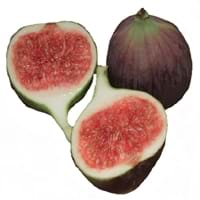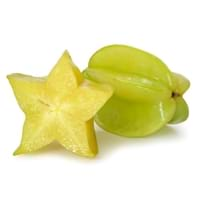Health Benefits
Cancer prevention, Controls blood pressure, Heart care, Increase in haemoglobin, Prevents constipation, Prevents macular degeneration, Reduces nervous tension
Cancer prevention, Heat stroke treatment
General Benefits
Controls blood pressure, Helps in weight loss, Maintains healthy cholesterol level, Strengthens bones
Anti oxidant properties, Anti-inflammatory properties, Digestive aid, Maintains healthy cholesterol level, Treatment of sore eyes
Skin Benefits
Brightens and lightens complexion, Hydrates skin, Skin rejuvenation, Treatment of acne
Anti-aging benefits, Heals sunburn, Skin rejuvenation
Hair Benefits
Good conditioner, Regulates hair growth, Softening mask
Promotes longer and healthier hair, Protects hair
Allergy Symptoms
Abdominal pains, Anaphylaxis, Coughing, Headaches, Hives, Itching, Nasal congestion, Skin rash, Sneezing, Sore throat, Swelling of hands
NA
Side Effects
Allergic reaction, Skin rash, Possibly unsafe during pregnancy
Nausea, Vomiting
Best Time to Eat
Best if taken as a breakfast (or empty stomach), Don't consume at night and before bed, Morning time (before lunch)
As a snack in the late afternoon, Eat the fresh ones, avoid mixing with any other foods, don't eat after meal., Strictly avoid empty stomach
Vitamin B5 (Pantothenic Acid)
Vitamin C (Ascorbic Acid)
Vitamin K (Phyllochinone)
Phytosterol
Not Available
Calories in Fresh Fruit with Peel
Calories in Fresh Fruit without Peel
Not Available
Not Available
Calories in Frozen Form
Not Available
Calories in Canned Form
Not Available
Calories in Jam
Not Available
Calories in Pie
Not Available
Type
Tree fruit
Tree fruit
Season
Summer, Winter
Autumn, Spring, Summer
Varieties
Abyad, Adriatic, Alma, Atreano, Bataglia, Black Bethlehem, Black Madeira, Black Mission, Brown Turkey, Sierra, Calimyrna, Kadota, Deanna, Figoin and Hardy Chicago Fig
King, Bell, Sri Kembangan, Arkin and Fwang Tung
Color
Green, Purple, Red
Golden yellow, Green
Inside Color
Pink
Yellowish Green
Shape
Conical
Oval and Star(Cross section)
Taste
Sweet
Crisp, Juicy, Sweet
Origin
Western Asia
Sri Lanka
Grows on
Trees
Not Available
Soil Type
Clay, Limestone, Loam, Sandy
Loam, Well-drained
Climatic Conditions
Dry, Warm
Moist, Warm to hot climate
Facts about
- Fig tree is considered as a symbol of abundance, fertility and sweetness.
- The fig is made up of 55% of natural sugar so they are the sweetest fruits.
- Figs are used as a fat substitute in recipes.
- When carambola is cut horizontally, it forms a star.
- It is believed that carambola helps to cure hangover.
- Entire carambola is edible, including its skin.
- 2 varieties of carambola are cultivated: tart & sweet.
Top Producer
Turkey
Taiwan
Other Countries
Albania, Algeria, Brazil, Egypt, Iran, Morocco, Syria, Tunisia, United States of America
Australia, Guyana, India, Israel, Malaysia, Philippines, United States of America
Top Importer
France
Europe
Top Exporter
Turkey
Malaysia
Botanical Name
Ficus carica
Averrhoa carambola
Synonym
Not Available
Not Available
Subkingdom
Tracheobionta
Tracheobionta
Division
Magnoliophyta
Magnoliophyta
Class
Magnoliopsida
Magnoliopsida
Subclass
Alismidae
Rosidae
Family
Moraceae
Oxalidaceae
Species
Ficus carica
A. carambola
Generic Group
Mulberry
Not Available
Difference Between Fig and Carambola
We might think that Fig and Carambola are similar with respect to nutritional value and health benefits. But the nutrient content of both fruits is different. Fig and Carambola Facts such as their taste, shape, color, and size are also distinct. The difference between Fig and Carambola is explained here.
The amount of calories in 100 gm of fresh Fig and Carambola with peel is 74.00 kcal and 31.00 kcal and the amount of calories without peel is Not Available and Not Available respectively. Thus, Fig and Carambola belong to Low Calorie Fruits and Low Calorie Fruits category.These fruits might or might not differ with respect to their scientific classification. The order of Fig and Carambola is Rosales and Oxalidales respectively. Fig belongs to Moraceae family and Carambola belongs to Oxalidaceae family. Fig belongs to Ficus genus of Ficus carica species and Carambola belongs to Averrhoa genus of A. carambola species. Beings plants, both fruits belong to Plantae Kingdom.









